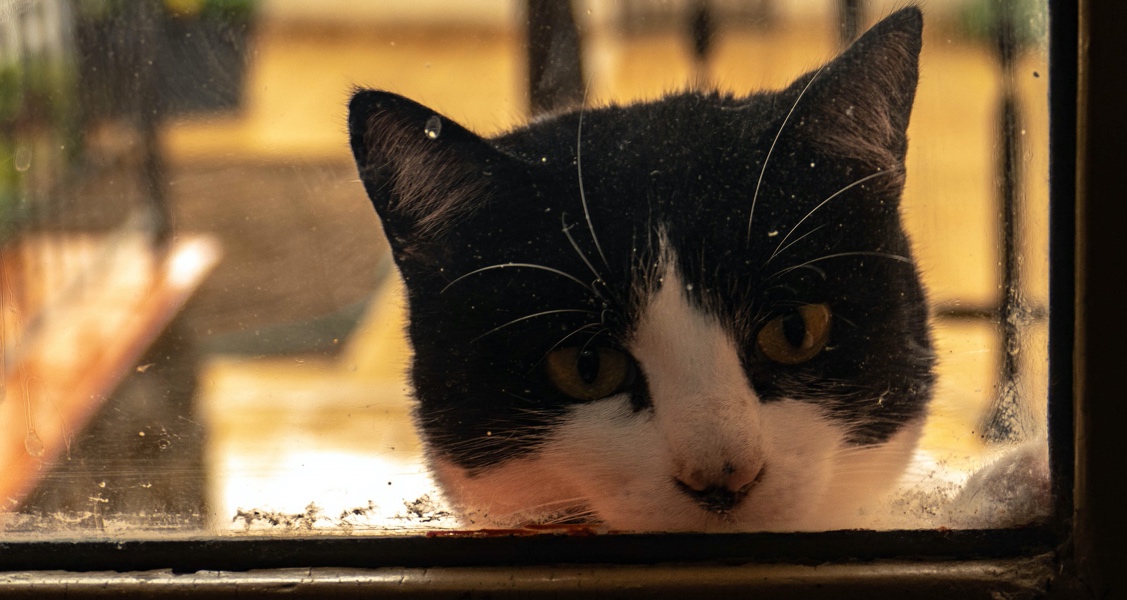How to Identify and Treat Separation Anxiety In Cats
By: Olivia Walker | Jul 20, 2021

Cats have long been considered loners, aloof, independent, and more discerning about their company. But this is a bit of a misconception and not entirely true.
You might have heard about separation anxiety in dogs. The classic image of an attached and clingy pup who becomes sad and anxious upon their owners absence. But what you might not have realized is that cats are also prone to separation anxiety. Yes, you read that right, and both genetic and environmental factors are at play.
As anyone with a cat knows, they have their own individual personalities. Many in fact do love being around people, especially those who pamper them. According to recent research, 64% of cats have been found to be deeply attached to their owners. Not only that, it has also been shown that they tend to be less stressed around their caregivers.
It should be mentioned that many felines do well if they are left alone for short periods of time too, however, there is a tendency that they can become stressed and turn to coping behaviors for longer absences. But not to worry! Here are some tips that can help you deal with your cat’s separation anxiety in the most constructive and effective ways possible.
Looking for Signs and Symptoms
A cat with behavioral problems will show some telltale signs and cues. But before we start listing signs of feline separation anxiety, there is something you should know first. According to vets, the degree of distress can range in severity from mild to extreme. Therefore, picking up on these warning signs early could help you resolve the issue before it progresses to something more serious.
That being said, cats begin to express themselves differently when they sense that their favorite person is about to leave. Here are some signs that may indicate your cat is having a hard time dealing with the separation. Let’s take a look at them.
- Refusing to use the litter box and urinating or defecating exclusively on the owner’s bed.
- Excessive vocalization or meowing. Some cats even carry their favorite toys in their mouths while crying and moaning.
- Scratching or destroying things. (Found mostly in male cats.)
- Abnormal or excessive grooming. (Found mostly in female cats.)
- Hyper-attachment to caregivers. Excessive following and making attempts to seek attention whenever they are in sight.
- Hyperactive greeting behavior when a favorite person comes back.
- Vomiting or leaving hairballs everywhere.
- Making attempts to escape the house.
- Collecting and playing with things that belong to the parents.
If you feel that your cat is showing signs of separation anxiety, now is the time to take action.
Paying Attention to Health and Wellness
Just like humans, when cats feel happy and healthy on the inside, they tend to be friendlier on the outside. So, try dealing with your cat’s separation anxiety by paying attention to their health and wellness. For starters, make sure you are feeding the appropriate food to your cat: consider if they have solid stools, do not itch or vomit, and maintain an ideal body condition. Anytime you select a new pet food it has to have a trial period before knowing if it is right for your pet or not.
Believe it or not, what you feed to your cat plays an essential role in influencing their behavior and moods. Not to mention, it also provides the nutrients needed for a healthy immune system. So, pick the right cat food that not only tastes good but also makes your kitty feel good and enhances their health.
Don’t forget to reward them with nutritious treats every time they present signs of good behavior such as staying calm before and after you leave. Think of this as positive reinforcement for your cat.
It’s also important to make sure you spend some quality time with your pet every day. This involves stimulating games and exercises that satisfies your cats natural instincts and hunting behaviors. You could even try taking your cat outside by putting them on a leash and allowing them to explore the area which can help to expend their energy, but also take their mind off of you for some time.
Dealing with Attention-Seeking Behaviors
A pet struggling with separation anxiety will try really hard to seek your attention. But you need to resist the urge of catering to your cat at every turn. Succumbing to attention-seeking behaviors might send the wrong message to your furry friend and they might start associating scratching and crying with being attended to.
All you need to do is provide attention to your cat when they are calm and showing signs of independence. For instance, do not coddle or pamper them when they are meowing or crying unless you suspect something serious is going on. Instead, offer a treat every now and then when they are resting or playing.
Keeping Arrivals and Departures Low-key
You need to make sure that you don’t create a huge fuss when you leave or return. Keep calm before departing and also when you arrive so as not to draw too much attention to the event. If possible, wait a little bit before leaving until your cat shows signs of settling down.
Another strategy is to try distracting your feline with toys before departing. Engaging your cat with something interesting will take their mind off what is happening and make the transition a lot easier on them.
Pro Tip: One of the best ways to deal with separation anxiety is to build a consistent routine. The more you stick to a schedule, the more beneficial it is going to be for you and your cat. By routine, what we mean is to have a designated time for feeding and playing. That way your cat will know exactly when they should and shouldn’t expect to receive attention.
To Sum It All Up
Lastly, it should be said that punishing a cat for behavioral issues is never the approach to take and it will just make things worse.
Remember, when dealing with separation anxiety, it’s important to consider your cat’s basic needs that includes their health, making sure to spend enough quality time together, and only rewarding appropriate behavior. By following a few of these simple steps, over time you should have a happy and well-adjusted kitty.


Disclaimer: healthcareforpets.com and its team of veterinarians and clinicians do not endorse any products, services, or recommended advice. All advice presented by our veterinarians, clinicians, tools, resources, etc is not meant to replace a regular physical exam and consultation with your primary veterinarian or other clinicians. We always encourage you to seek medical advice from your regular veterinarian.

